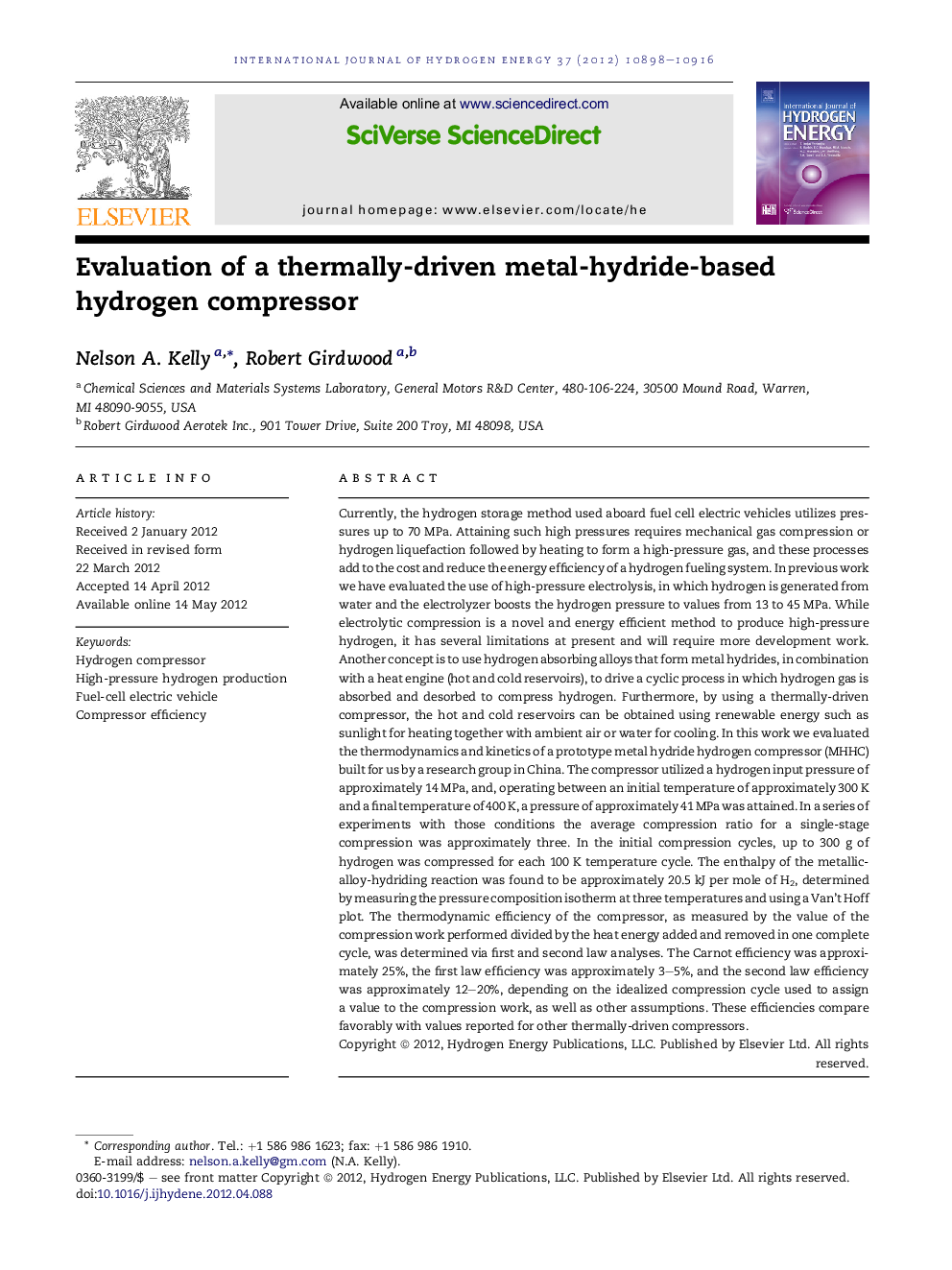| کد مقاله | کد نشریه | سال انتشار | مقاله انگلیسی | نسخه تمام متن |
|---|---|---|---|---|
| 1276374 | 1497555 | 2012 | 19 صفحه PDF | دانلود رایگان |

Currently, the hydrogen storage method used aboard fuel cell electric vehicles utilizes pressures up to 70 MPa. Attaining such high pressures requires mechanical gas compression or hydrogen liquefaction followed by heating to form a high-pressure gas, and these processes add to the cost and reduce the energy efficiency of a hydrogen fueling system. In previous work we have evaluated the use of high-pressure electrolysis, in which hydrogen is generated from water and the electrolyzer boosts the hydrogen pressure to values from 13 to 45 MPa. While electrolytic compression is a novel and energy efficient method to produce high-pressure hydrogen, it has several limitations at present and will require more development work. Another concept is to use hydrogen absorbing alloys that form metal hydrides, in combination with a heat engine (hot and cold reservoirs), to drive a cyclic process in which hydrogen gas is absorbed and desorbed to compress hydrogen. Furthermore, by using a thermally-driven compressor, the hot and cold reservoirs can be obtained using renewable energy such as sunlight for heating together with ambient air or water for cooling. In this work we evaluated the thermodynamics and kinetics of a prototype metal hydride hydrogen compressor (MHHC) built for us by a research group in China. The compressor utilized a hydrogen input pressure of approximately 14 MPa, and, operating between an initial temperature of approximately 300 K and a final temperature of 400 K, a pressure of approximately 41 MPa was attained. In a series of experiments with those conditions the average compression ratio for a single-stage compression was approximately three. In the initial compression cycles, up to 300 g of hydrogen was compressed for each 100 K temperature cycle. The enthalpy of the metallic-alloy-hydriding reaction was found to be approximately 20.5 kJ per mole of H2, determined by measuring the pressure composition isotherm at three temperatures and using a Van't Hoff plot. The thermodynamic efficiency of the compressor, as measured by the value of the compression work performed divided by the heat energy added and removed in one complete cycle, was determined via first and second law analyses. The Carnot efficiency was approximately 25%, the first law efficiency was approximately 3–5%, and the second law efficiency was approximately 12–20%, depending on the idealized compression cycle used to assign a value to the compression work, as well as other assumptions. These efficiencies compare favorably with values reported for other thermally-driven compressors.
► Tested hydrogen compressor based on absorption/desorption cycle in a metal hydride.
► Determined first and second law and Carnot efficiency of the compressor.
► Evaluated compressor kinetics and cycle time.
► Metal hydride-based compression can be powered by low-grade and waste heat.
Journal: International Journal of Hydrogen Energy - Volume 37, Issue 14, July 2012, Pages 10898–10916